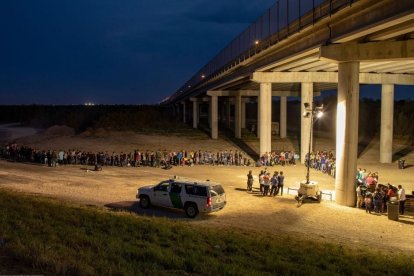Hundreds of migrants from an ISIS hotspot country have crossed the US border
At least 1,500 people from Tajikistan have arrived on U.S. soil, while in the previous 14 years, only 26 Tajik nationals had crossed the border.

(CBP/Flickr)
At least 1,500 immigrants from Tajikistan have crossed the U.S. border. The situation, which has skyrocketed under Joe Biden's administration, is causing concern because the country is one of the recruiting hotspots for the terrorist group ISIS.
According to a New York Post count, during the previous 14 years, only 26 Tajik citizens had crossed the border.
Similarly, the media outlet explained that although it is unknown how many of the Tajik immigrants that have arrived under the Democratic administration were released on U.S. soil, most of the immigrants caught at the border apply for asylum and are allowed to stay while awaiting a judicial hearing.
"The small Central Asian country, which borders both China and Afghanistan, has become a major source of terrorists for ISIS and Islamic State Khorasan Province (ISIS-K), an extreme offshoot of the Islamic State militant group," detailed The New York Post.
In that sense, several experts such as Edward Lemon, a professor at Texas A&M University who studies Central Asia, have explained that ISIS has taken advantage of the Tajiks to carry out attacks abroad.
Tajiks have been recruited to and played a key role in terrorist organizations like Islamic State to a greater degree than many neighboring countries in recent years. “They have become key to [ISIS-K]’s externally-focused campaign as it seeks to gain attention and more recruits,” Lemon emphasized.
The information comes just after FBI Director Chris Wray warned that the United States is under increased threat from terrorist groups.
Meanwhile, the Border Patrol detained more suspected terrorists in 2023 than in the previous six years combined. Most encounters with agents between ports of entry occurred on the southern border, while interceptions at border checkpoints have soared in the north.
RECOMMENDATION




















